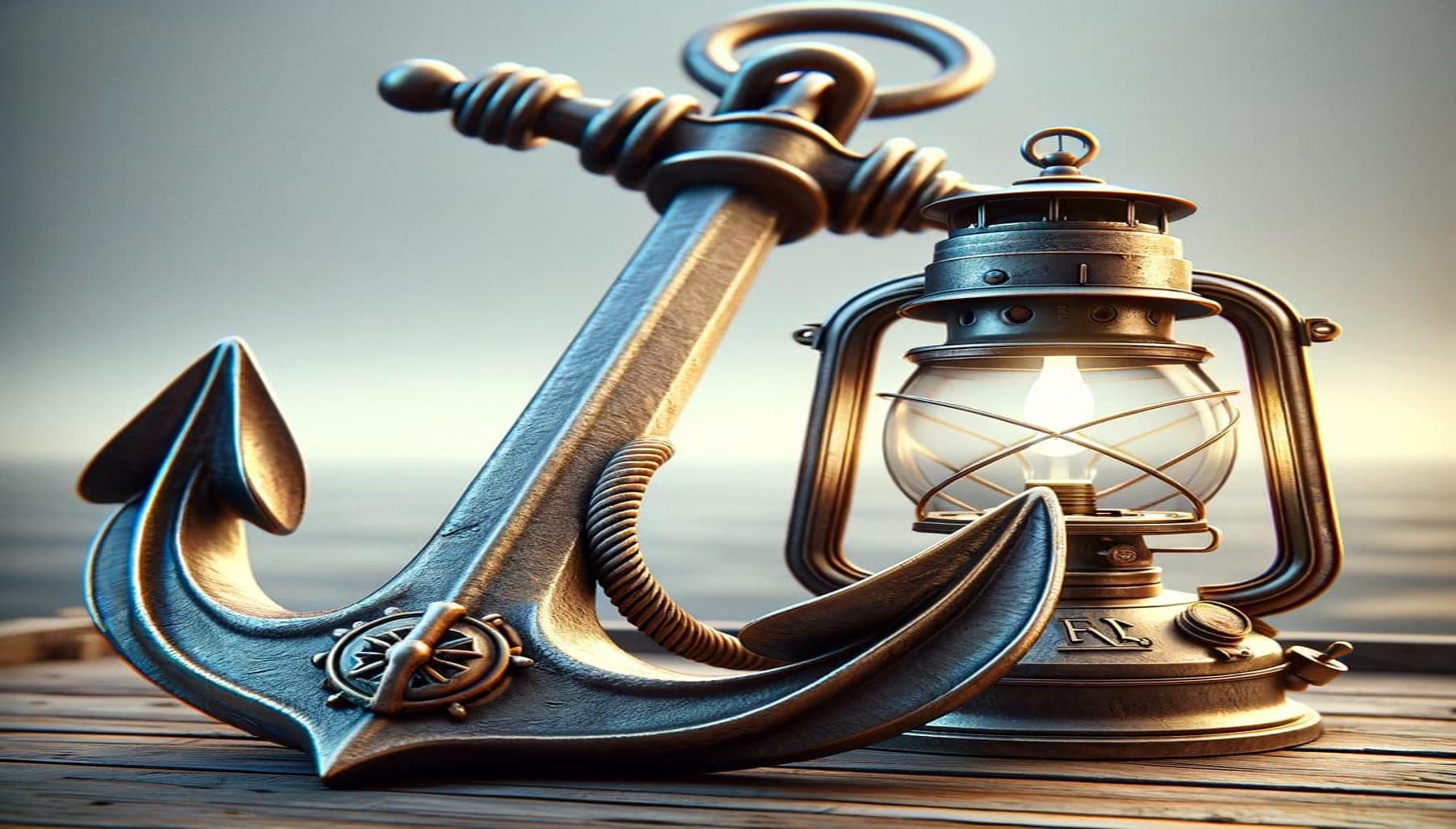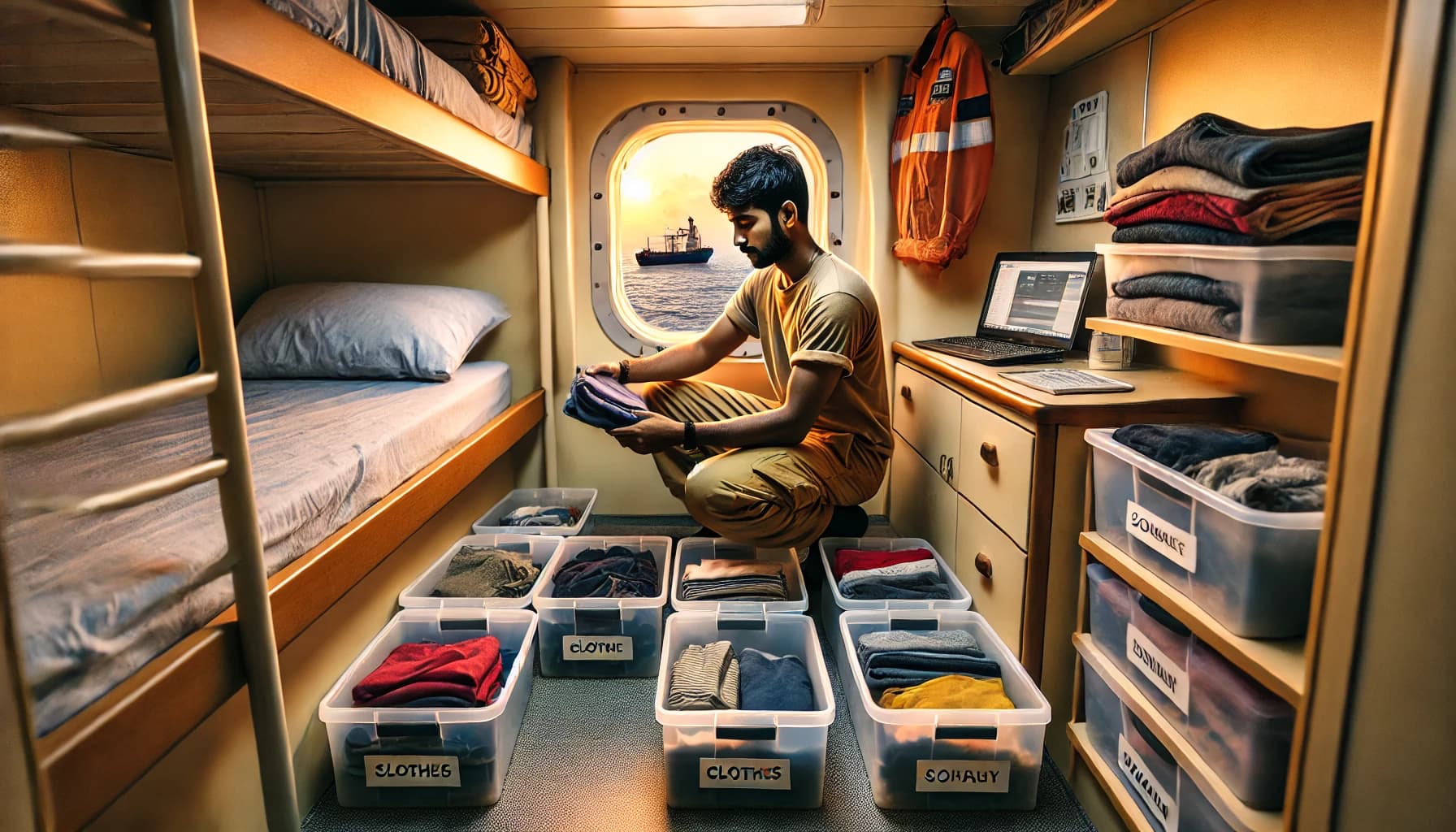There are so many different shipping terms out there that we thought it was time we wrote a blog post that dives into them. But because there are so many nautical words and maritime phrases, we decided that the best way to do this was by one letter at a time.
For more letters, you can check out nautical terms beginning with C, the letter D here, the letters E and F here and the letters X, Y and Z here.
So let’s get started with maritime words that begin with the letter A. How many do you already know, and how many are new to you?
From A-frame to aweigh: Maritime words beginning with A
A-Frame
The A-frame is a lifting apparatus commonly found installed on the stern of pipe laying vessels, cable laying vessels, and offshore construction vessels.
AIS
AIS stands for Automatic Identification System - an automated tracking system that is used to identify vessels, assist in target tracking, simplify information, exchange and provide additional information to boost situational awareness.
Read more: Nautical Terms That Begin with the Letter P
ARPA
ARPA stands for Automatic Radar Plotting Aid - a computerized add-on feature to the Radar. ARPA identifies the ship’s course and speed and a target's course and speed and calculates the collision avoidance data. This makes it much easier for humans rather than calculating the data themselves.
Abandon Ship
Abandon Ship is a phrase used to inform the passengers and crew that they need to leave the ship immediately due to an emergency, such as the vessel being about to sink.
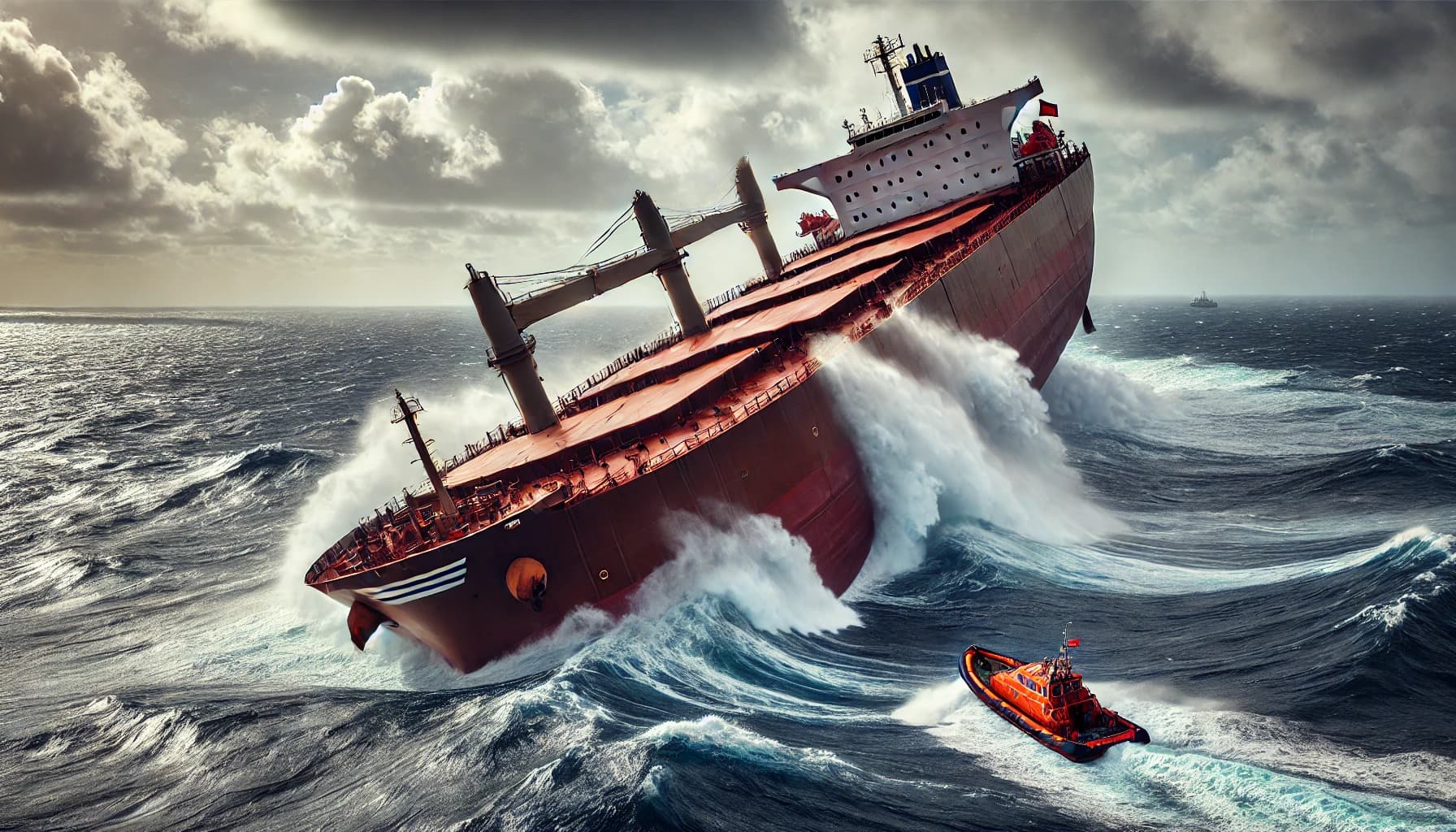
Able Bodied Seaman
An Able Bodied Seaman (also called an Able Seaman, or just AB) is a member of the Deck Department. They will have more than two years’ worth of experience and be expected to know the ins and outs of their job.
Read more: Nautical Terms That Begin with the Letters G, H and I
An Able Seaman’s duties and responsibilities include standing watch / keeping lookout, cleaning and maintenance, conducting security rounds, supervising lower ranking deck crew, and assisting with operations such as docking, undocking, line handling and the loading and unloading of cargo.
Accommodation
The Accommodation area is the part of the ship in which the crew facilities are located. This includes the cabins and the crew mess (the dining area and place where crew members can hang out when they aren’t working.)
Accommodation Ladder
The Accommodation Ladder is a portable flight of stairs, with handrails, that is attached to the side of a vessel. This enables easy access between the dock or a smaller boat and the ship. The ladder is designed so that no matter what its angle of inclination, the steps will always be horizontal.
Read more: Nautical Terms That Begin with the Letters J, K & L
Active Fin Stabilizers
Active Fin Stabilizers aim to reduce the rolling of a vessel in rough seas. This helps to provide greater stability and safety while reducing the negative impact on speed and fuel performance in adverse conditions.
The fins are normally located near amidships on both sides (port and starboard) of the ship. They can be both retractable and non-retractable.
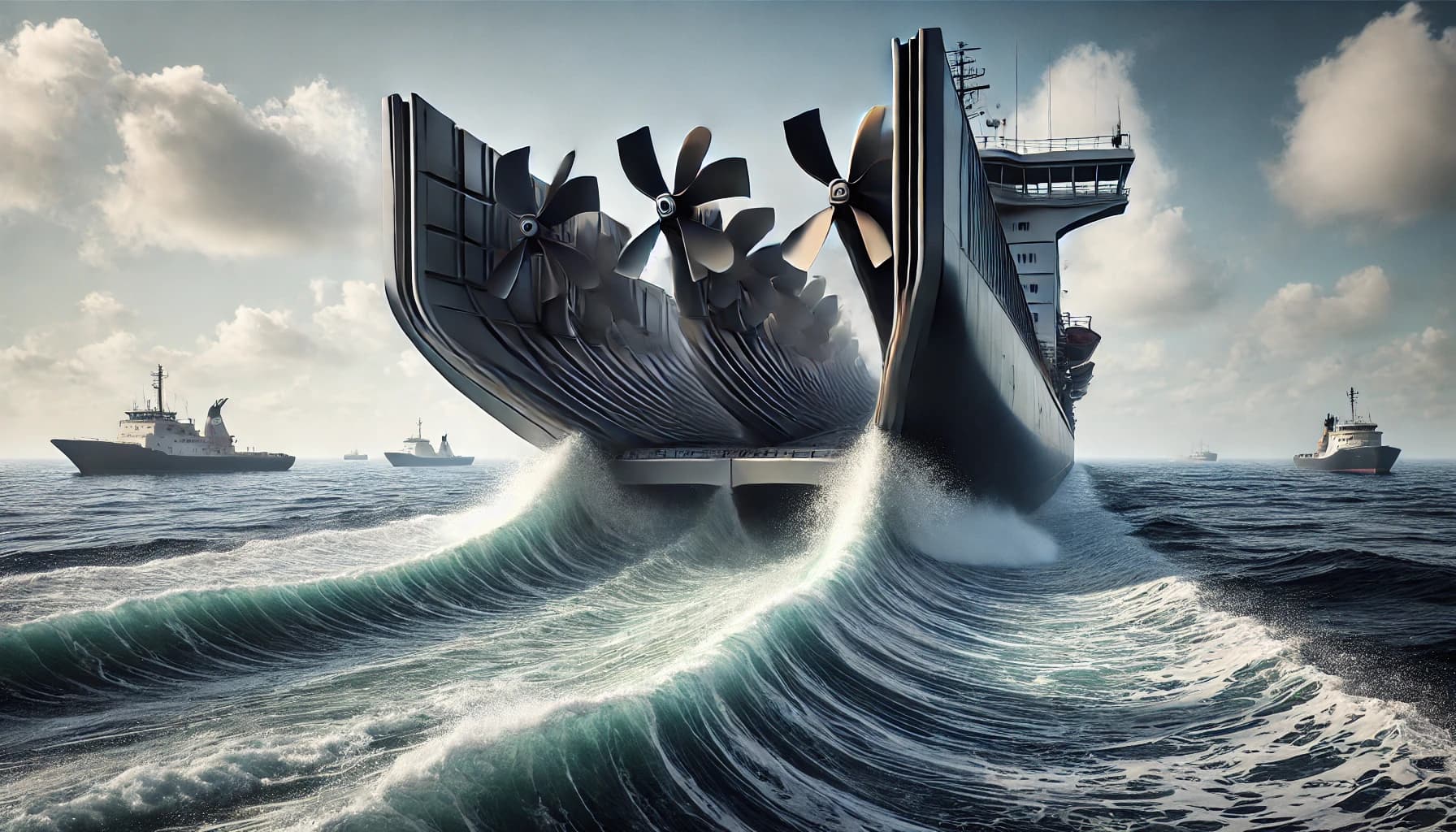
Active Fin Stabilizers have long been a feature of passenger ships, such as cruise liners, however they are becoming increasingly popular on commercial cargo and container ships.
Added Mass
When a vessel is in transit, the water that is moving around the hull creates a hydrodynamic force. Because a ship is a complexly shaped object, as opposed to a simple tube or sphere for example, an additional quantity of water is added to the water which has been displaced by the vessel’s movement to factor in the Added Mass.
Read more: Nautical Terms That Begin with the Letter S
Admeasurement
Admeasurement is the formal measurement of a vessel in order to determine its capacity or tonnage.
Read more: Nautical Terms That Begin with the Letter M
Administration
Administration in shipping refers to the government of the state under whose authority a vessel is operating. A ship flies a flag of a State and the Administration is therefore the government of that state.
Adrift
If a vessel is Adrift, she is floating without being either steered or moored.
Afloat
If a vessel is Afloat, she is in the state of floating on water. She is not in dry dock on land or run aground.
Aframax Tanker
An Aframax tanker is an oil tanker that has a DWT (deadweight) of between 80,000 and 120,000 metric tonnes. The name Aframax comes from Average Freight Rate Assessment (AFRA) - a rating system used for tankers coined by Shell Oil in 1954 in order to standardize the terms of shipping contracts.
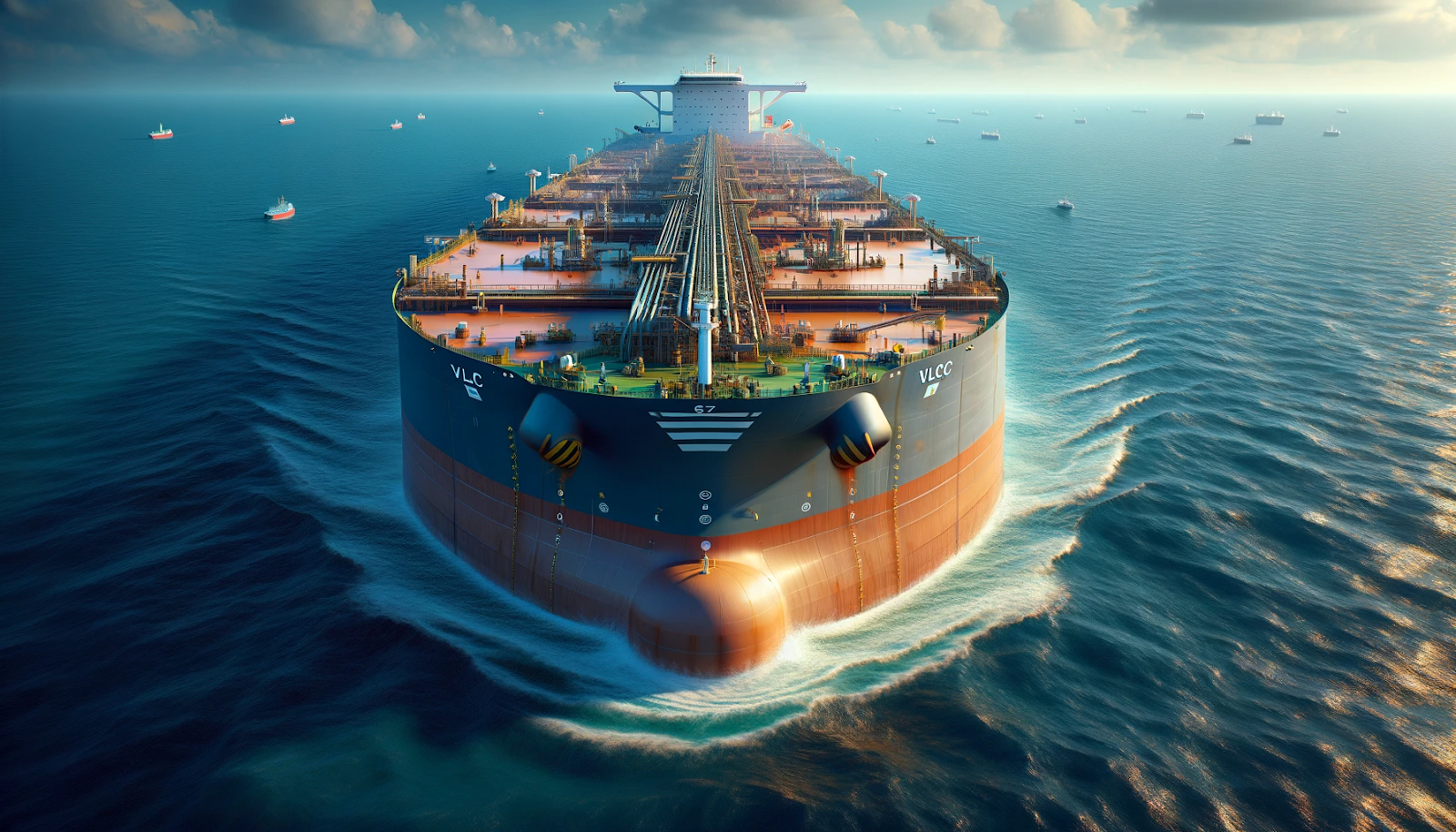
Read more: Nautical Terms That Begin with the Letter T
Because of their size, Aframax tankers are best suited to short- to medium-haul journeys, however their size is also to their advantage as they are able to serve the majority of the world’s ports, particularly those in regions that are unable to accommodate VLCC (very large crude carriers) and ULCC (ultra large crude carriers) tankers due to their smaller ports or lack of offshore oil terminals.
Aft
Aft means towards or near to the vessel's stern.
Aft PeakThe Aft Peak is a compartment that is located aft (at, near, or towards the vessel’s stern) of the aftermost watertight bulkhead.
Aft Peak Bulkhead
The Aft Peak Bulkhead is the name for the first main transverse bulkhead forward of the stern. It must be kept watertight.
Read more: Nautical Terms That Begin with the Letters Q & R
Aft Peak Tank
The Aft Peak Tank is a water tank that is located in the right aft of a vessel. The tank will either be a designated freshwater tank or a ballast water tank which will be used to adjust the ship’s trim.
Aft Perpendicular
The Aft Perpendicular on a ship is an imaginary vertical line which is drawn between the forward side of the stern with the summer load waterline. However, it depends on the designer of the ship whether the Aft Perpendicular is drawn through the aft side of the rudder post or through the center-line of the rudder pintles.
The Length Overall (LOA) is the distance between the fore and aft extreme points of the vessel and is the aft reference line for hydrostatic calculations.
Afterbody
The Afterbody is the section of a vessel's hull which lies aft of midships. It encompasses the entire after half of the hull from the upper deck to the keel.
Afternoon Watch
The Afternoon Watch is the period of being on duty (AKA Watch) that takes place onboard a vessel between 12.00hrs and 16.00hrs.
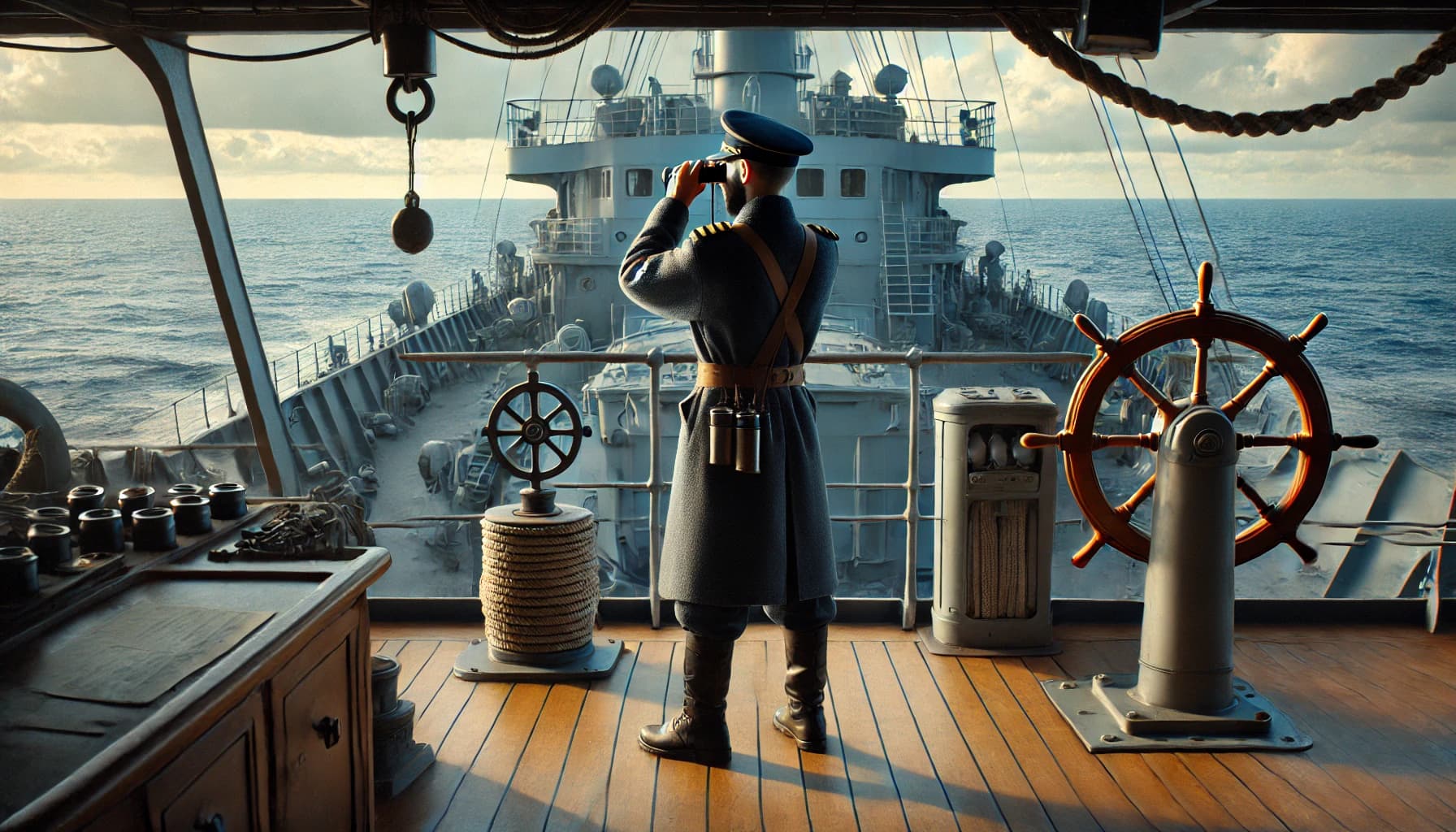
Agency Fee
An Agency Fee is a sum of money that is charged to the vessel by the ship's agent to compensate for any services that were received while the ship was in port.
Aground
Aground is the word used when a vessel is lying upon or touching shallow ground. The opposite of being afloat.
Aids to Navigation
Aids to Navigation (AtoN) are anything that helps a vessel navigate more safely. They are charted marks and include items such as beacons, lighthouses, buoys, lights, and radio beacons.
Aids to Navigation Service Vessel
An Aids to Navigation Service Vessel is a ship or boat that carries special equipment in order to service, maintain and repair navigation aids such as automatic lighthouses, buoys, beacons, and lights.
Air Cushion Vehicle (ACV)
An Air Cushion Vehicle (ACV), otherwise known as a hovercraft, is supported mainly, or in its entirety, by a cushion of air. ACVs are supported both when in motion and at rest, meaning the air must be continuously generated.
Read more: Nautical Terms That Begin with the Letters N & O
Air Draft
The Air Draft (or Air Draught) is the vertical distance from the surface of the water (the waterline) to the highest fixed point on a vessel.
Air Lock
An Air Lock is a protected, enclosed area generally found on a gas carrier vessel that enables safe entrance between a dangerous gas zone and a gas safe space.
Air Lubrication
Air Lubrication is a way to reduce hull friction by generating a layer of air between the underside of a vessel and the surface of the water. This increases a ship’s efficiency by reducing drag by up to 15%.
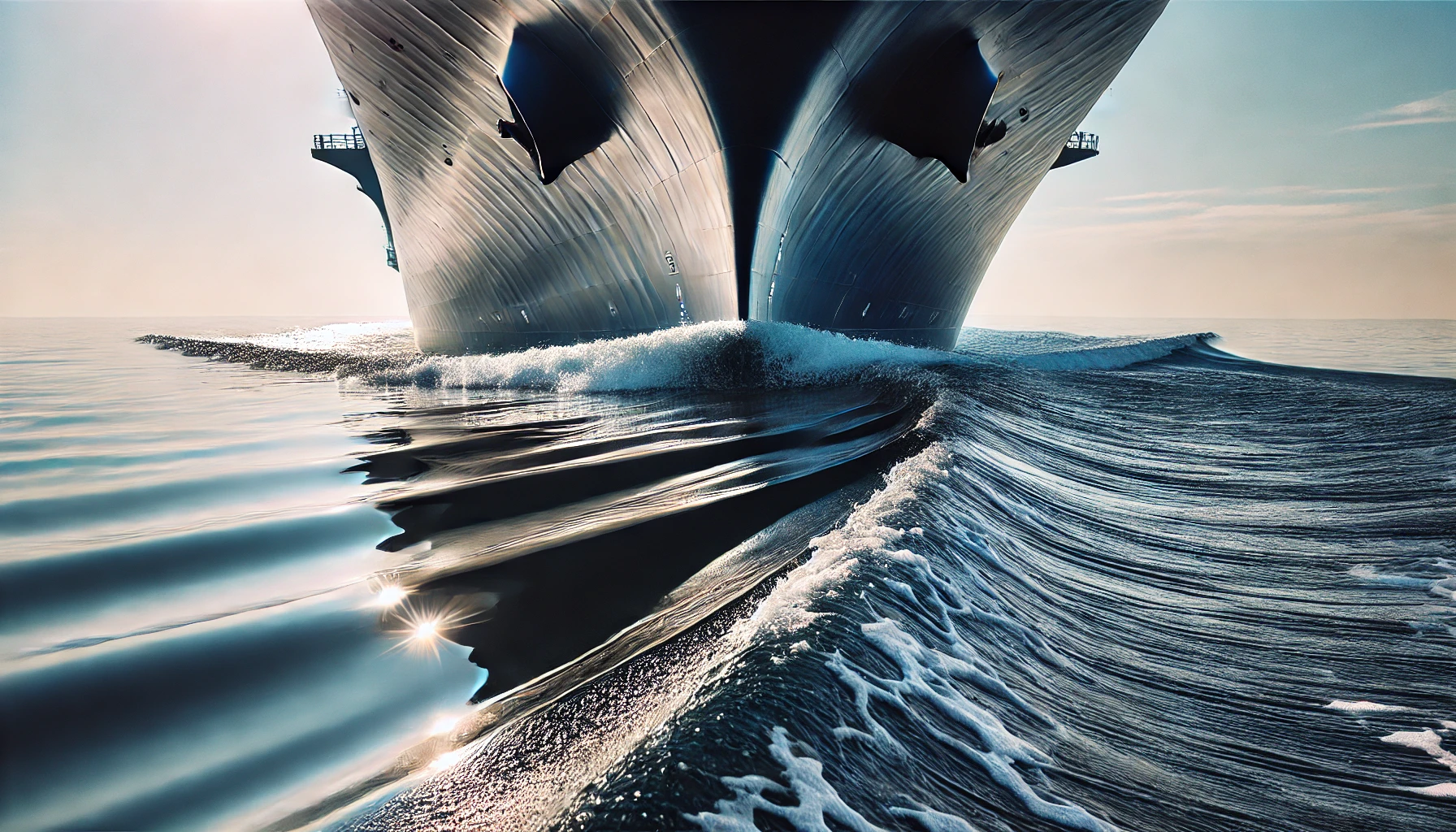
Air Resistance
Air Resistance refers to a vessel’s resistance to motion that is caused by the air circulating around the part of the ship that is above water.
Air Trunks
Air Trunks are a part of a vessel’s hull that either contain air ducts as well as other lines such as pipes and cables, or are themselves used to conduct air.
Aldis Lamp
The Aldis Lamp (also called a Signal Lamp or Morse Lamp) is a hand-held electric lamp which is normally found on the bridge wing of a vessel. It is used to signal Morse code messages via flashing light between ships of all types, including naval and commercial.All HandsAll Hands refers to the entire ship’s company, including all crew members as well as officers. Most commonly heard in the expression "All Hands on Deck.”
Alleyway
An Alleyway is the name given to any corridor onboard a vessel that connects one area of the accommodation to another.
Allision
Allision is the name given to the act of a moving ship striking, or colliding with, a stationary object - such as a dock. Not to be confused with collision which generally refers to two vessels colliding with one another.
Amidships
Amidships refers to the middle of a ship, either longitudinally or laterally. In ship building amidships is located in the middle of the length of the vessel.
Anchor
An Anchor is a heavy object or device that is attached to a cable, chain or rope, and is shaped, typically with barbed flukes, so that it grips the sea bed. The Anchor holds a ship (or other floating structure) in her desired position regardless of wind and current.
Anchor Ball
The Anchor Ball is a round black ball which is displayed at the front of a vessel to show that the ship is anchored.
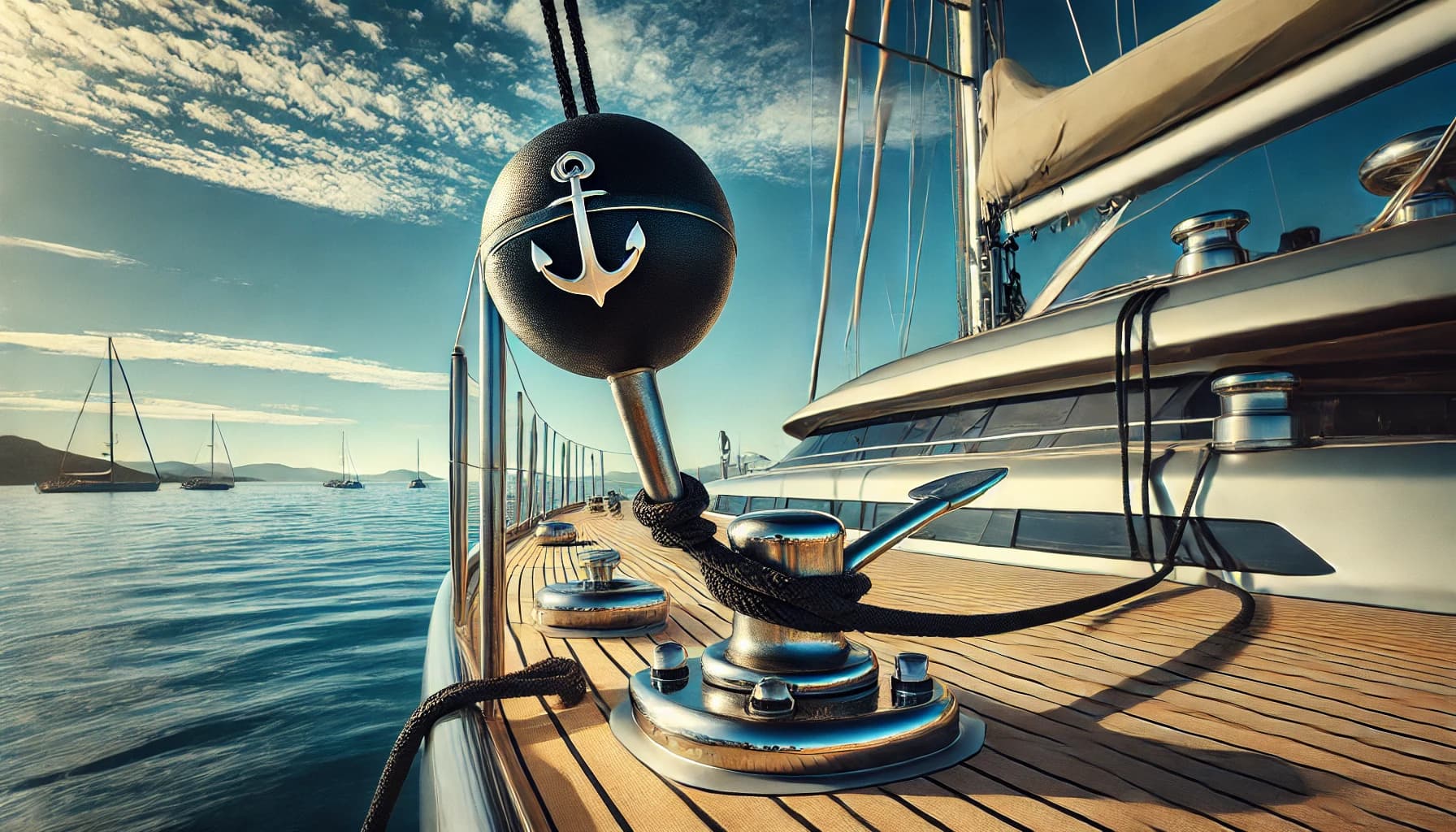
Anchor Chain
The Anchor Chain (or rode, or cable, or even rope) is attached at one end to the vessel and at the other end to the anchor.
Anchor Handling Tug
An Anchor Handling Tug is a type of Tugboat that is used to move anchors, as well as for towing drilling vessels, lighters and other similar vessels.
Anchor Lights
Anchor Lights are the lights that a vessel must display when she is at anchor.
Anchor Pocket
The Anchor Pocket is a recess in the bow of a ship that houses a stockless anchor.
Anchor Watch
The Anchor Watch is when an Officer remains on deck at night when the ship is at anchor, to safeguard the vessel. This can mean everything from staying alert to intruders, to making sure the anchor is not dragging and moving the ship, to keeping an eye out for other vessels who may be dragging or sailing too close.
Read more: Nautical Terms that Begin with the Letters U, V and W
Anchor Windlass
An Anchor Windlass is a mechanical device that operates on a pulley system and is used to raise and lower the anchor and chain down to, and up from, the sea bed. This system consists of a barrel with a chain or cable wound around it and is operated using a belt or crankshaft, either manually, or by motor.
Anchorage
Anchorage is the fee charged by a port or harbor to allow a vessel to moor there.
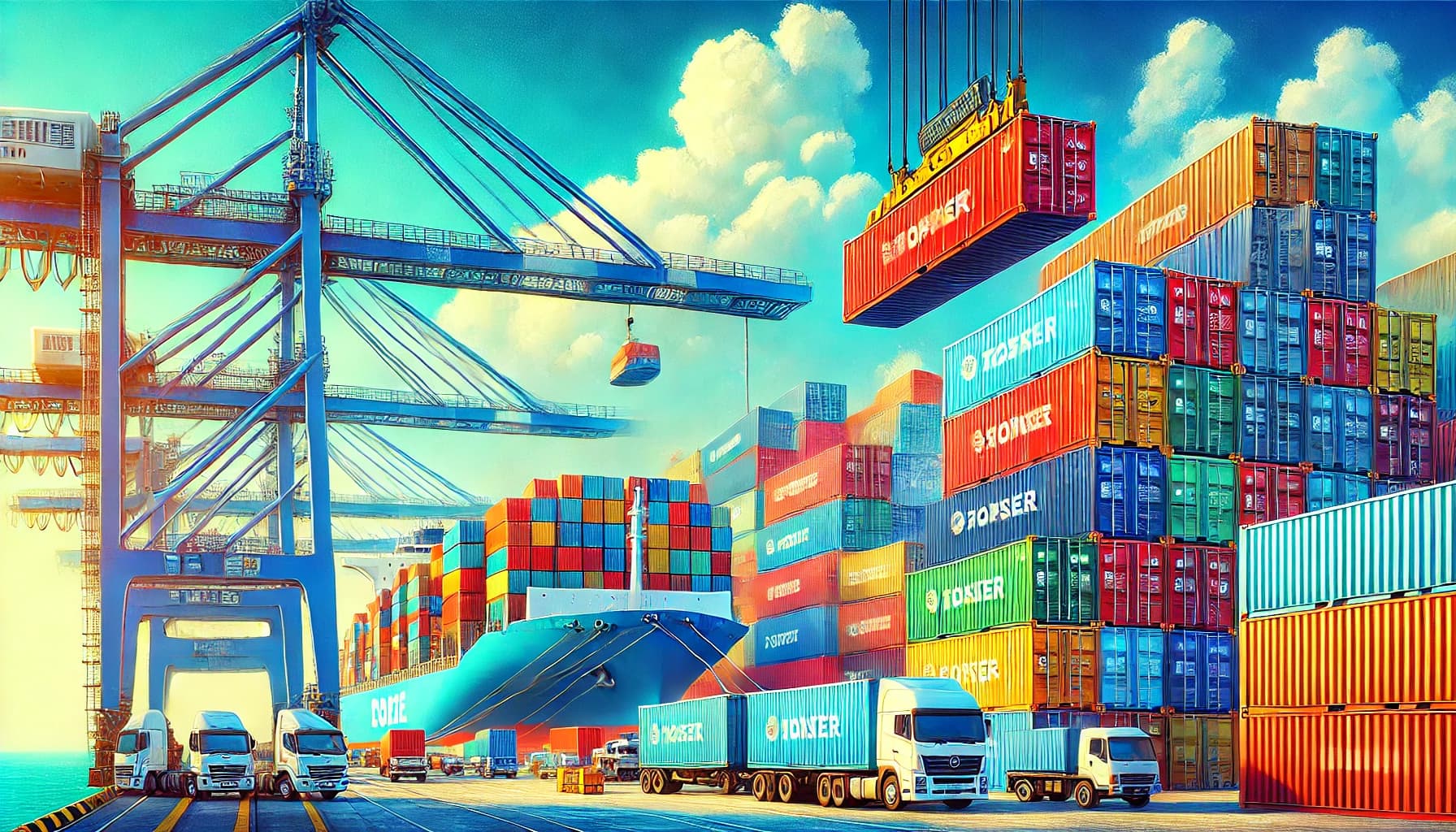
Anti-Exposure Suit
An Anti-Exposure Suit (also called an Exposure Suit) is a garment designed to protect the wearer from an extreme environment. For example, from wet and cold environments found at sea, specifically in evacuation or rescue operations, or in diving.
Depending on the type of suit and the situation it has been designed for, the garment may provide buoyancy, total isolation from the environment, or thermal insulation.
Anti-Fouling Paint
Anti-Fouling Paint is a type of paint that is manufactured using specific agents to prevent the growth and attachment of organisms on a vessel’s hull.
Anti-Fouling System
An Anti-Fouling System is a device, treatment, paint or coating that controls, or prevents, the attachment of organisms on a vessel’s hull.
Anti-Heeling System
An Anti-Heeling System is used during cargo operations - i.e. during the loading and unloading of freight - to ensure that the ship’s heeling angle is kept to a minimum. This is important as excessive heeling could result in rolling cargo being damaged, containers getting jammed in cell guides or ramps being twisted.
Anti-Rack Spacer System
An Anti-Rack Spacer System is a system that can be used to connect two 20-foot shipping containers to create one single 40-foot container.
Anti-Roll Tank
An Anti-Roll Tank is a tank that is fitted onto a vessel with the aim of improving that tank's response to roll motion. The rate of water transferred to the port side of the tank to the starboard side is slowed by baffles, whilst the tank itself is designed so that a greater quantity of water remains on the ship’s higher side.
Appendages
An Appendage is any part of a ship that protrudes from the hull below the waterline. This includes propellers, the rudder, shafts, bilge keels, struts, and sonar domes.
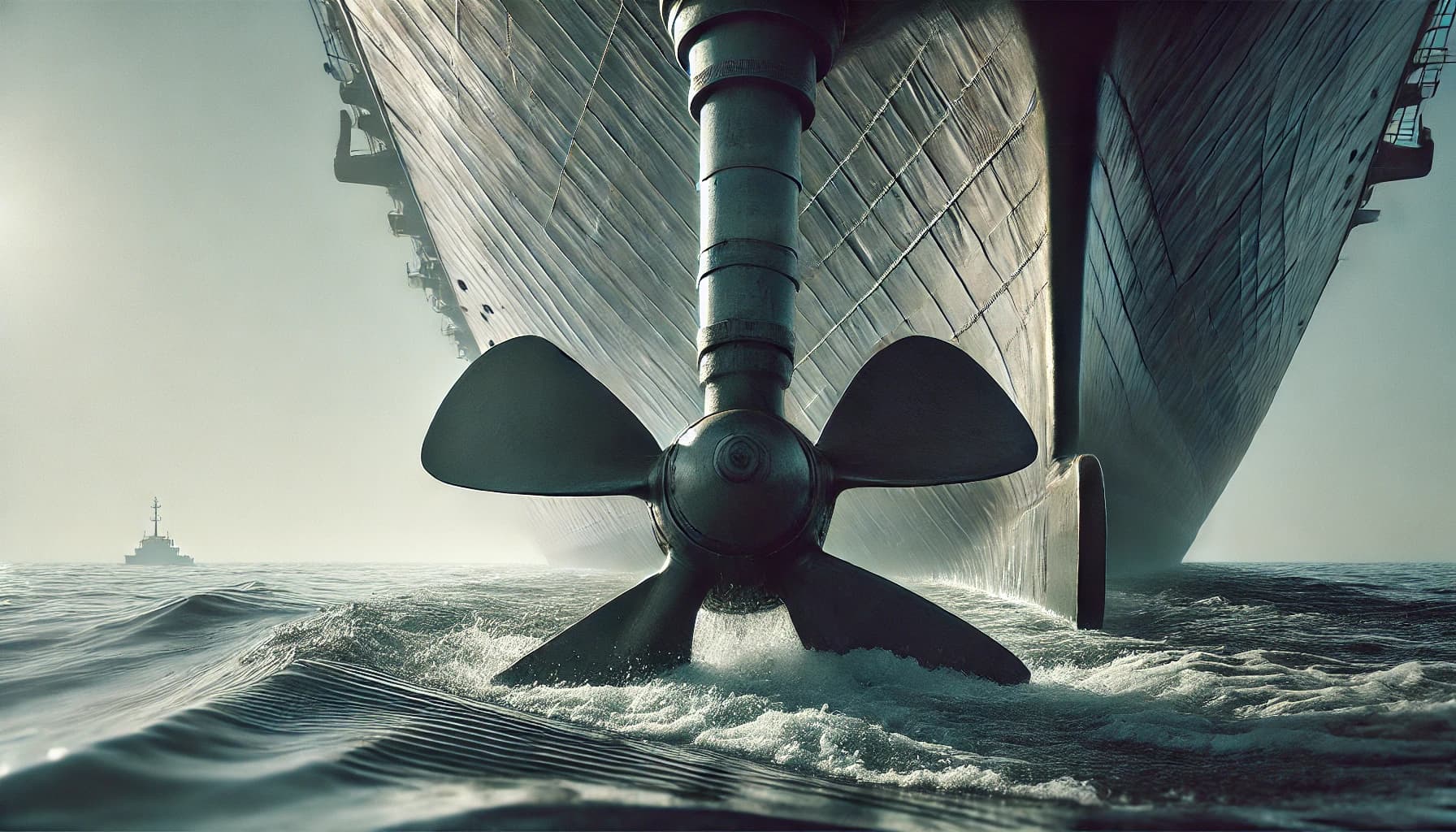
Apron
The Apron is an area that is directly in front or behind a wharf shed onto which cargo is lifted. The cargo is unloaded or loaded onto a vessel from the front Apron and into and out of trucks or railroad cars from the rear Apron.
Arrest
Arrest, or ship arrest, refers to a court order in which a vessel is ‘arrested’ and held under state authority in a port in the face of a pending, present or future claim that relates to the vessel. The reasons for a ship’s arrest can be due to anything from a claim by creditors to the vessel’s unseaworthiness.
Articles of Agreement
The Articles of Agreement is the document which contains all information relating to the terms of agreement between the Master (Captain) of the vessel and the crew.
Assembly Station
A ship’s Assembly Station is an area in which passengers and crew must meet in the event of an alarm, emergency or announcement.
Astern
Astern can variously mean behind a ship, located at or towards the stern of a ship, or the act of a ship moving backwards.
Athwartships
Generally used to describe cargo, Athwartships is to be in a position across a vessel from side to side at right angles to the keel.
Atrium
Similar to an Atrium in land-based architecture, this is a public area with a high roof. In nautical terms, the height spans three or more open decks.
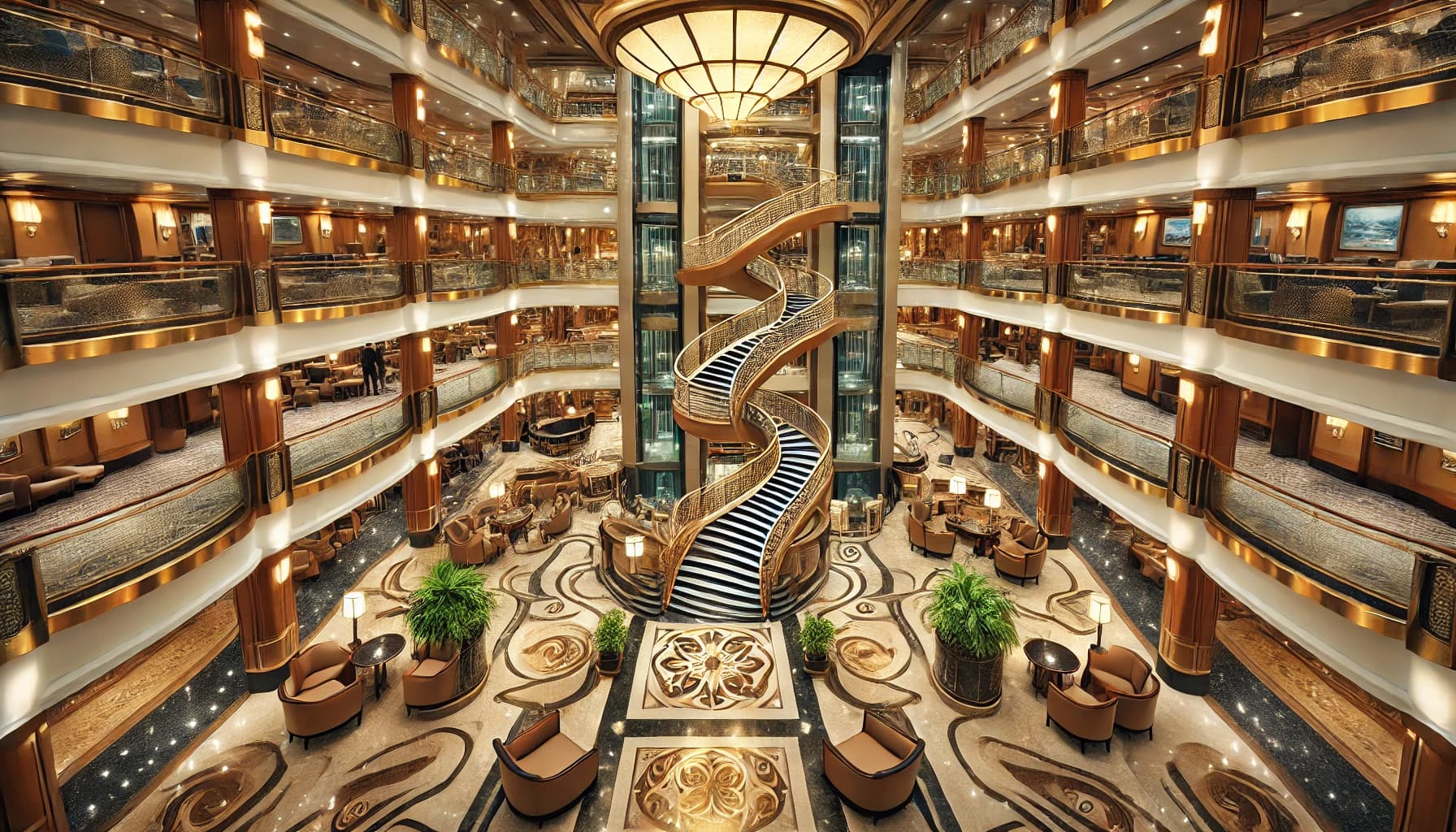
Auto Container
An Auto Container is a shipping container used for the transportation of cars and other vehicles.
Auto Mooring System
An Auto Mooring System makes the mooring and unmooring of vessels a faster process, reducing the time spent in port and therefore fuel consumption and emissions. The system is controlled remotely from the bridge of the ship, or by a location on shore.
Automatic Identification System (AIS)
An Automatic Identification System (AIS) is a navigational aid and automated tracking system that is used for the identification of vessels and navigational marks. It displays other vessels in the vicinity of a ship whilst also showing the ship it is located on to other vessels with AIS in that area.
AIS is a broadcast transponder system that operates in the VHF mobile maritime band, autonomously and continually.
Automatic Radar Plotting Aid (ARPA)
An Automatic Radar Plotting Aid (ARPA) is a marine radar technology designed to replace the manual plotting of targets. The ARPA uses radar contacts to calculate the course, speed, and closest point of approach (CPA) to various tracked objects.
This enables whoever is steering or navigating a vessel to monitor the screen and take action if there is a potential chance of collision with that object.
Autopilot
An Autopilot (or Automatic Pilot) is a self-steering device system used for automatic navigation. They come in varying degrees of complexity and sophistication although any Autopilot should be able to maintain a vessel on a pre-set compass course.
More advanced Autopilots gather data from the ship’s instruments or connect to GPS receivers. The system will be able to tell the difference between the vessel’s ordered course and the actual course and will automatically adjust the rudder so that it moves to an angle that is proportional to the discrepancy.
Auxiliaries
A vessel’s Auxiliaries are equipment such as motors, engines, winches and pumps etc. They have a part to play in the running of the vessel alongside the main propulsive machinery - such as boilers and engines on a steam installation.
Avast
Avast is a nautical term. It is an order to immediately stop doing something.
Awash
Awash is a term used to describe it when a vessel is so low in the water that the water is washing across the deck.
Aweigh
Aweigh is a term used to describe the moment when the anchor has just been lifted from the seabed.
For a full list of all maritime and nautical terms, check out the Martide Shipping Glossary!
Read the next post in this series: Nautical Terms That Begin with the Letter B

Eve Church
Eve is Martide's content writer, publishing regular posts on everything from our maritime recruitment and crew planning software to life at sea. Eve has been writing professionally for more than two decades, crafting everything from SEO-focused blog posts and website landing pages to magazine articles and corporate whitepapers.
UK

is the only site for maritime jobs

